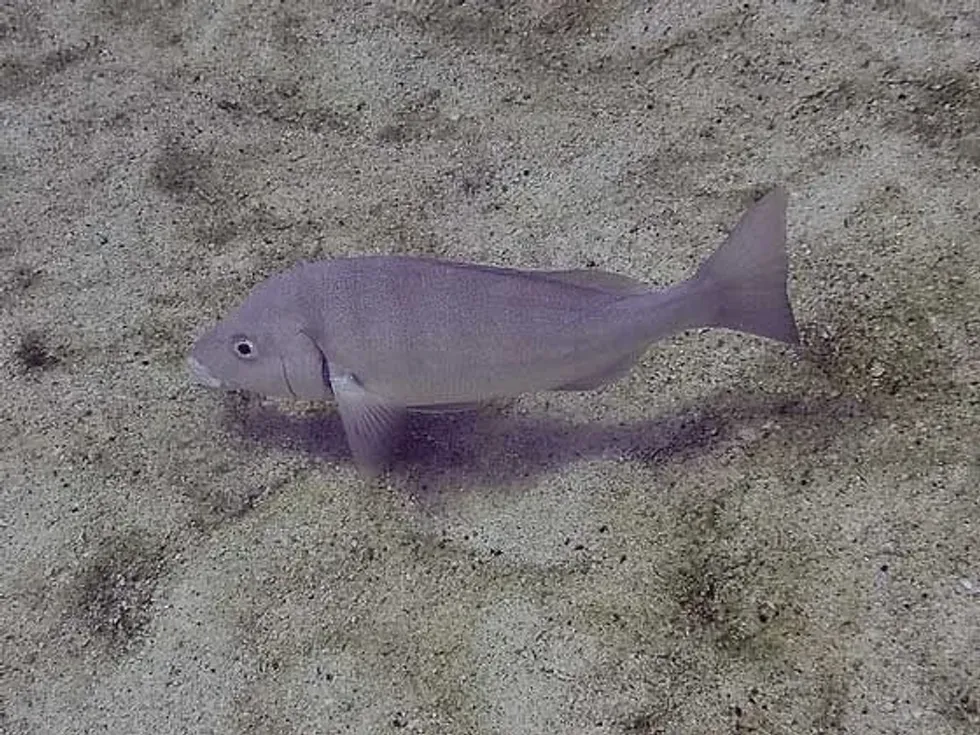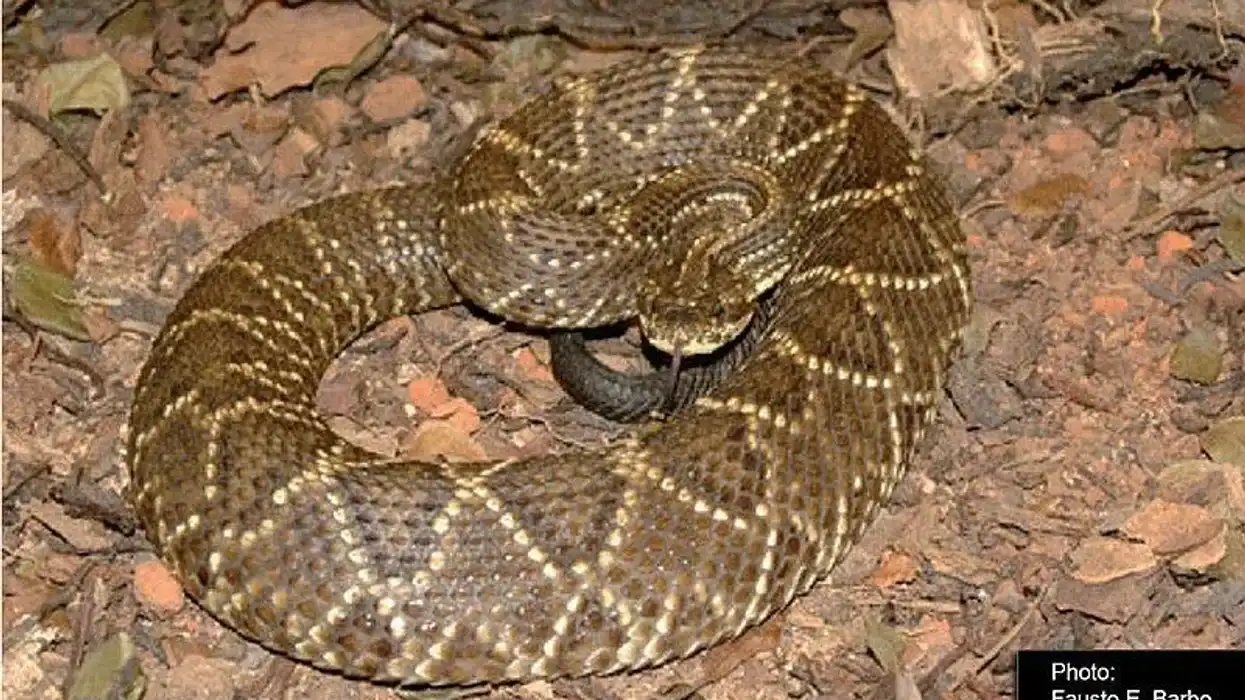The cubera snapper (Lutjanus cyanopterus) is a game fish that is native to the West Atlantic Ocean. The various types of snappers include canteen snapper, dog snapper, cuban snapper, red snapper, cubera snapper, and gray snapper.
The cubera snapper is the largest fish of the snapper family.
This species occurs across the range of Florida, Nova Scotia, Cuba, and all the way in South Atlantic to the mouth of the Amazon River in Brazil. They are rarely found north of Florida and very scarce even throughout the range.
The fish is often confused with the gray snapper but can be distinguished by their gill rakers and tooth patch. Cubera snappers are very aggressive predators and feed on crabs and other large crustaceans with the help of their strong canines.
However, whale sharks prey on this species of fish.
The cubera snapper is very tasty to eat but one needs to take precautions while eating them to avoid ciguatera poisoning. To know more about the species name, places and areas they are found, jaws, teeth, pair of lips, size, and weight, do read this article.
If you like this article, you can also read our articles on mutton snapper facts and lane snapper facts.
Cubera Snapper Interesting Facts
What type of animal is a cubera snapper?
Cubera snappers are the largest fish of the snapper family.
What class of animal does a cubera snapper belong to?
Cubera snappers belong to the Actinopterygii class of the Animalia kingdom.
How many cubera snappers are there in the world?
There is no definite information about the total population of cubera snappers.
Where does a cubera snapper live?
Adult fish are found in offshore waters over wrecks, reefs, ledges, and rocky bottoms. Young fish sometimes enter freshwater canals or inhabit mangrove areas and grass beds.
What is a cubera snapper habitat?
The cubera snapper is a native of the Western Atlantic that occurs across the range of Florida, Nova Scotia, Cuba, and all the way in South Atlantic to the mouth of the Amazon River in Brazil.
They are rarely found north of Florida to New Jersey, and very few of these napper species are present in the Gulf of Mexico.
Overall, they are generally scarce in most of their range.
Who does cubera snapper live with?
Cubera snappers are solitary fishes and are usually found in 60 ft (0.3 m) of water or deeper.
How long does a cubera snapper live?
Like most members of the snapper family, the cubera snappers also have an average lifespan of 50 years and more.
How do they reproduce?
The snapper species are oviparous breeders. This means that they release their pelagic eggs into offshore waters.
The breeding or spawning season of the cubera snapper begins in June and continues till August. This snapper species is mainly found to spawn in the Caribbean waters. The spawning aggregations include hundreds of these species in deep areas.
The eggs hatch the next day after fertilization and the pelagic larvae that are released get dispersed by the offshore water current. Almost no information is known about what happens to the larvae next.
What is their conservation status?
No proper estimate regarding the population of this fish is available. They have been classified as Vulnerable (VU) according to the IUCN Red List and their numbers are decreasing every day due to overfishing and predators.
Cubera Snapper Fun Facts
What does a cubera snapper look like?
The cubera snapper has steely, steely gray, or dark brown fin and scales on its head and body, with a sporadic reddish tinge. The upper part of the body has a purple sheen and is darker in color than the lower part.
The fish has a rounded anal fin, thick lips, and deep red eyes.
It also has united dorsal fins that consist of pectoral fins that do not extend as far as the anal fin, 14 rays, and 10 spines. The cubera snapper has five to seven gill-rakers present on the lower limb of the first branchial arch.
Another distinguishing feature of snappers is the tooth patch on the roofs of their mouths called the vomerine tooth patch. The cubera snapper is often mixed up with the gray snapper (also known as mangrove snapper).
They can be distinguished with the help of this vomerine tooth patch; the gray snapper has an anchor-shaped patch while the other one has a triangular patch. The cubera snapper also has large canine teeth. These pairs of canine teeth are detectable even when the mouth of the animal is closed.

How cute are they?
Cubera snappers look very frightful and ugly. They are not cute at all.
How do they communicate?
Cubera snappers (Lutjanus cyanopterus) are solitary creatures that prefer to live all alone in the great depths of the ocean. As they are rarely found together except during the spawning season, not much information is available regarding how these creatures communicate with each other.
How big is a cubera snapper?
The average size of cubera snapper is found to be 36-60 in (91.4-152.4 cm). This species can reach a length of 63 in (160 cm), though most do not exceed 40 in (101.6 cm).
How fast can a cubera snapper swim?
No record of the swimming speed of these fishes is available. However, they are very deft swimmers and are found usually at great depths of the ocean.
How much does a cubera snapper weigh?
The average weight of a cubera snapperr is found to be 39.6-127.8 lb (18-58 kg).
What are the male and female names of the species?
There are no specific names for the males and females of this species.
What would you call a baby cubera snapper?
There is no definite name for a baby cubera snapper.
What do they eat?
Cubera snappers are aggressive, carnivorous fish species that mainly feed on shrimp, crabs, and fishes. Cubera snappers have strong canines which allow them to devour large crustaceans such as crabs and lobsters.
Are they poisonous?
The cubera snapper sometimes feeds on dead algae found on seagrass beds. These algae such as dinoflagellates present on the seagrass beds have toxins that build up in the liver of the fish.
When a human eats this fish that has toxin present in it, they can be affected by ciguatera poisoning. These cases of ciguatera poisoning are very rare but one must take precautions before eating cubera snappers.
Would they make a good pet?
Cubera snappers are very big and rare. They live in great depths of the ocean and are not ideal choices for a pet.
Did you know...
Georges Cuvier was the first to document the cubera snappers in 1828. The species name is derived from the name of the French naturalist and zoologist.
What is the world record cubera snapper?
The state record for the biggest cubera snapper is 116 lb (52.6 kg). This giant snapper was caught off clearwater. According to the International Game Fish Association, the largest ever cubera snapper was caught by angler Marion Rose on June 23, 2007. The mammoth creature weighed 124.7 lb (56.5 kg) and was caught near Garden Bank in Louisiana.
Which snapper is the best?
The different types of snappers are canteen snapper, dog snapper, cuban snapper, black snapper, lane snapper, cubera snapper, and gray snapper. Of these, red snappers are the tastiest to eat.
The red snapper or the Northern red snapper is found in the Caribbean Sea, the Gulf of Mexico, and the Western Atlantic Ocean. Texan Joey Beaver caught the largest red snapper ever recorded; the giant creature was 39 lb (17.6 kg) in weight and 40 in (101.6 cm) in length.
Here at Kidadl, we have carefully created lots of interesting family-friendly animal facts for everyone to discover! For more relatable content, check out these lionfish facts and x-ray tetra facts pages.
You can even occupy yourself at home by coloring in one of our free printable cubera snapper coloring pages.










